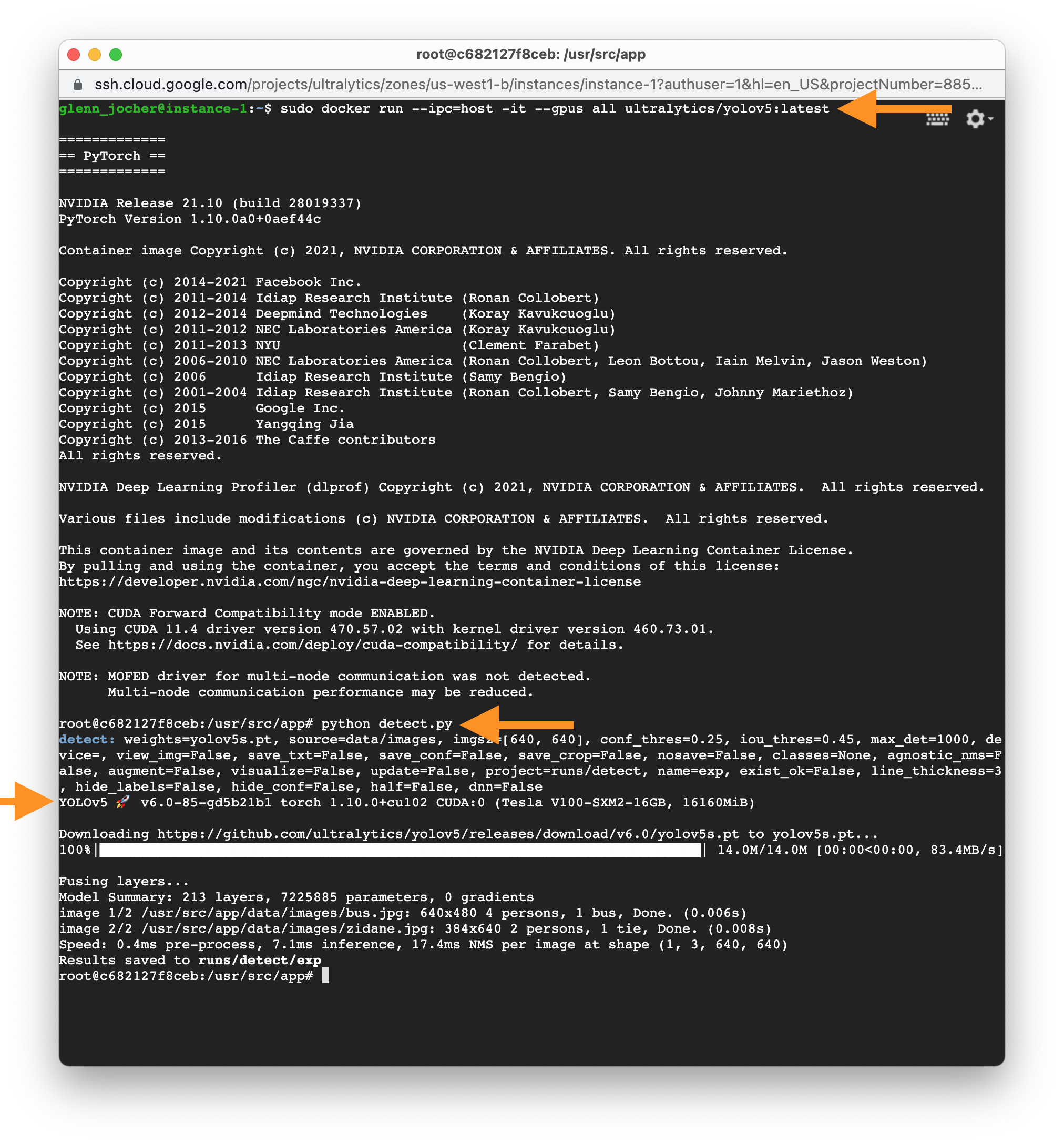comments: true
description: >-
Learn how to set up and run YOLOv5 in a Docker container. This tutorial
includes the prerequisites and step-by-step instructions.
keywords: >-
YOLOv5, Docker, Ultralytics, Image Detection, YOLOv5 Docker Image, Docker
Container, Machine Learning, AI
Get Started with YOLOv5 🚀 in Docker
This tutorial will guide you through the process of setting up and running YOLOv5 in a Docker container.
You can also explore other quickstart options for YOLOv5, such as our Colab Notebook

Prerequisites
- Nvidia Driver: Version 455.23 or higher. Download from Nvidia's website.
- Nvidia-Docker: Allows Docker to interact with your local GPU. Installation instructions are available on the Nvidia-Docker GitHub repository.
- Docker Engine - CE: Version 19.03 or higher. Download and installation instructions can be found on the Docker website.
Step 1: Pull the YOLOv5 Docker Image
The Ultralytics YOLOv5 DockerHub repository is available at https://hub.docker.com/r/ultralytics/yolov5. Docker Autobuild ensures that the ultralytics/yolov5:latest image is always in sync with the most recent repository commit. To pull the latest image, run the following command:
sudo docker pull ultralytics/yolov5:latest
Step 2: Run the Docker Container
Basic container:
Run an interactive instance of the YOLOv5 Docker image (called a "container") using the -it flag:
sudo docker run --ipc=host -it ultralytics/yolov5:latest
Container with local file access:
To run a container with access to local files (e.g., COCO training data in /datasets), use the -v flag:
sudo docker run --ipc=host -it -v "$(pwd)"/datasets:/usr/src/datasets ultralytics/yolov5:latest
Container with GPU access:
To run a container with GPU access, use the --gpus all flag:
sudo docker run --ipc=host -it --gpus all ultralytics/yolov5:latest
Step 3: Use YOLOv5 🚀 within the Docker Container
Now you can train, test, detect, and export YOLOv5 models within the running Docker container:
python train.py # train a model
python val.py --weights yolov5s.pt # validate a model for Precision, Recall, and mAP
python detect.py --weights yolov5s.pt --source path/to/images # run inference on images and videos
python export.py --weights yolov5s.pt --include onnx coreml tflite # export models to other formats
